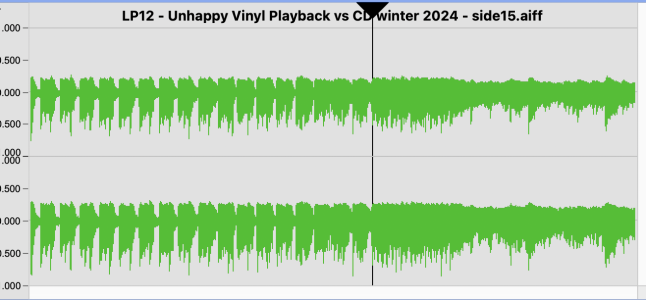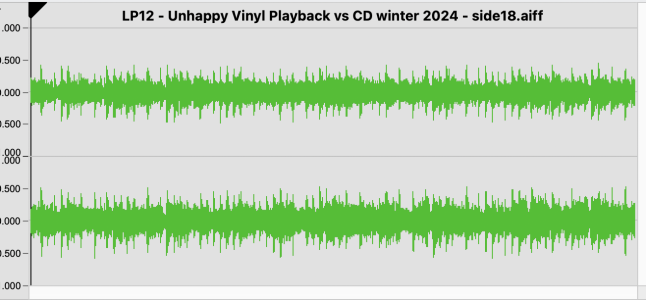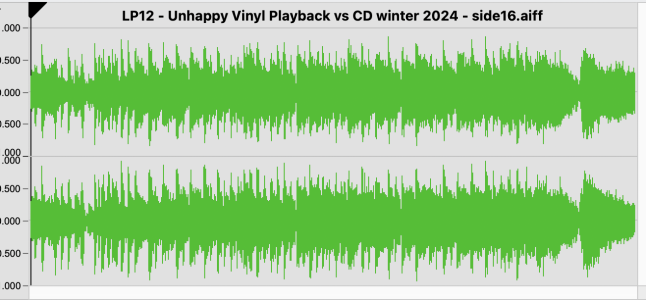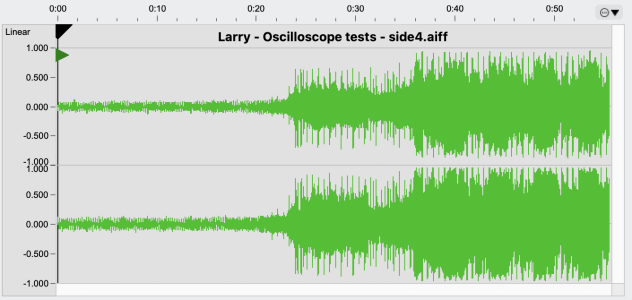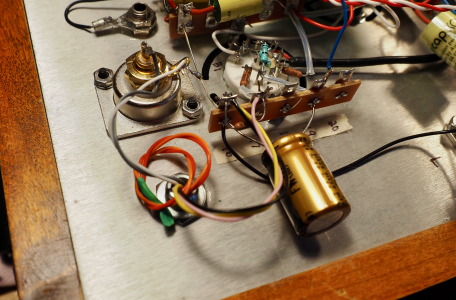Larpy
Member
Hello all,
Last fall I was having trouble with vinyl playback. I started a thread that went 4 pages before I realized I had all the good advice I needed and it was time for me to troubleshoot on my own. No need to rehash that thread (https://forum.bottlehead.com/index.php?topic=15152.0, but in the course of trying to track down the problem, I created all sorts of new problems. As best I can tell, the original problem was a bad transistor (or a bad solder connection to that transistor) in my Eros. I now feel confident that I have fixed the original issue (and all of the collateral damage I created in trying to find that problem) except for one that I simply cannot figure out.
There is something "off" in my vinyl playback and the only non-objective evidence I have for it consists of asymmetrical waveforms I get when I record LPs. It is a weird problem whose fix eludes me.
Here is what I'm experiencing in a nutshell. The audio signal I get from playing an LP through my Eros to my preamp (routed through) the "preamp out" to a DAC to my laptop = asymmetrical waveform. See first attachment.
The signal I get recording a CD from my CD player to my preamp (routed through "preamp out") to a DAC to my laptop = symmetrical waveform. See second attachment.
Doesn't matter which LP I play or which input my analog signal is plugged into at the preamp.
OK, so you’d think there’s something amiss in my analog chain, but get this:
The signal I get from my turntable and Eros directly to a DAC to laptop = symmetrical waveform(!). See third attachment.
So there’s something wrong with my preamp? Apparently not. I swapped it out with my Moreplay and I got the same results as above.
What on earth could cause this?
Last fall I was having trouble with vinyl playback. I started a thread that went 4 pages before I realized I had all the good advice I needed and it was time for me to troubleshoot on my own. No need to rehash that thread (https://forum.bottlehead.com/index.php?topic=15152.0, but in the course of trying to track down the problem, I created all sorts of new problems. As best I can tell, the original problem was a bad transistor (or a bad solder connection to that transistor) in my Eros. I now feel confident that I have fixed the original issue (and all of the collateral damage I created in trying to find that problem) except for one that I simply cannot figure out.
There is something "off" in my vinyl playback and the only non-objective evidence I have for it consists of asymmetrical waveforms I get when I record LPs. It is a weird problem whose fix eludes me.
Here is what I'm experiencing in a nutshell. The audio signal I get from playing an LP through my Eros to my preamp (routed through) the "preamp out" to a DAC to my laptop = asymmetrical waveform. See first attachment.
The signal I get recording a CD from my CD player to my preamp (routed through "preamp out") to a DAC to my laptop = symmetrical waveform. See second attachment.
Doesn't matter which LP I play or which input my analog signal is plugged into at the preamp.
OK, so you’d think there’s something amiss in my analog chain, but get this:
The signal I get from my turntable and Eros directly to a DAC to laptop = symmetrical waveform(!). See third attachment.
So there’s something wrong with my preamp? Apparently not. I swapped it out with my Moreplay and I got the same results as above.
What on earth could cause this?

